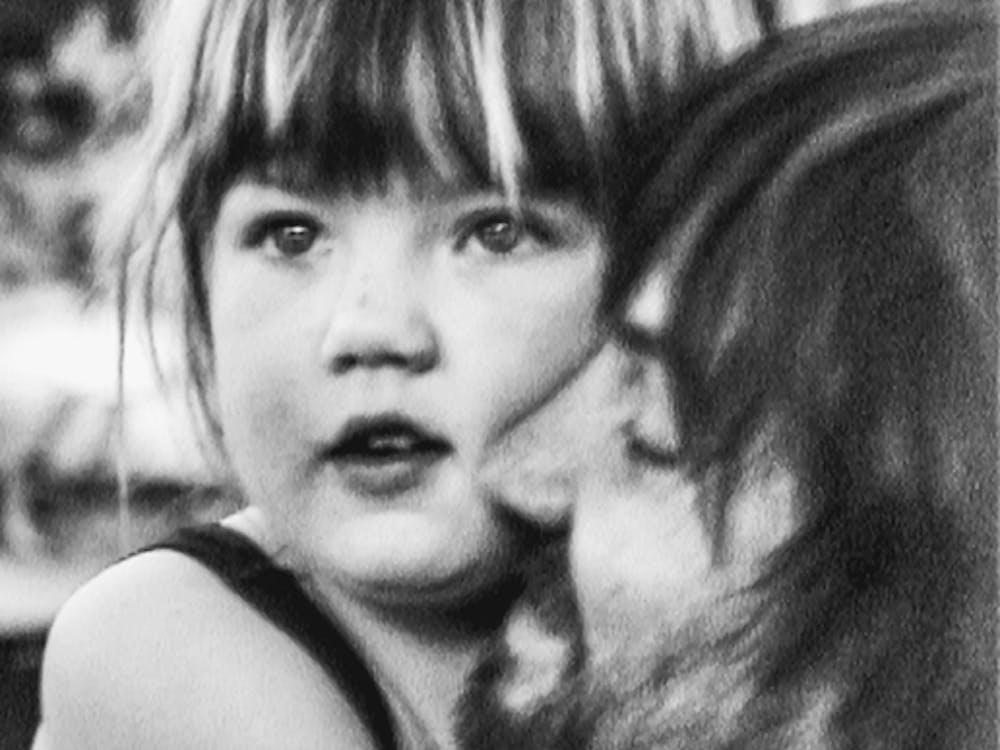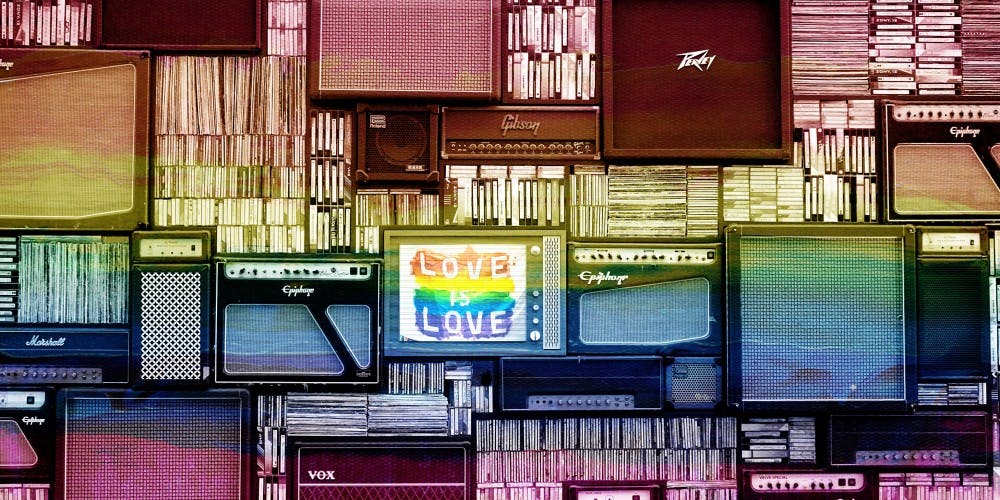From The Symposium to queer pulp novels of the 50s and 60s, it’s easy to say that queer media has come a long way. We no longer have to know a person who knows a person who has a secret gay book that we can borrow, nor do we have to suffer through the terrible writing and plotlines of those pulp novels.
Though representation is still off and stereotypes run rampant, queer media has developed to the point where it is becoming more regular and expected. This pride month though, we need to remember where it had to start to get to where it is now. Let’s run down the history of queer media. There’s a lot of history here, so for the purposes of this article we won’t talk about entertainment in general because that would be too much to fit in an article, today we’ll focus on books, movies, and television.
The “beginning”
Just as queer people have always existed, so has queer media. But let’s just say that the ancient Greeks were not getting home from brunch and pulling up season three of Queer Eye on Netflix.
Of course, there was queerness before the Greeks and therefore also queer media, but the easiest starting place is with the Greeks because they were super gay and loved to write about it.
At the time, relationships between young men and older “mentors” were encouraged and even coveted, since anything involving men has always been seen as better or sacred. So a relationship between two men, to them, was a pure and powerful thing.
Wow, that is incredibly misogynistic and we know that all forms of queerness have existed alongside gay men, but haven’t always been highlighted in the same way.
Basically though, as I said, the Greeks were super gay and would write poems for their lovers and express them in dramatic ways. This is most notable in Plato’s Symposium, which was basically a dinner party where guests would drink, and, as previously mentioned, dramatically resight poems and the like in front of the rest of the guests.
The Symposium began with Phaedrus suggesting that they should use the night to honor the god of love. Pausanias follows up by expressing the distinction between common love and heavenly love. Common love is driven by lust and desire while heavenly love is between a boy and a man and is purer than common love.
Shortly thereafter another drunk guest, Alcibiades, interrupts the dinner, entering in a drunken stumble and proclaiming his love for Socrates.
What we can gather from the Symposium is that it was written to describe events taking place at the time that were clearly queer, likely for other queer people to read. The culture surrounding queer media was also very different.
The 1900s-1920s were gay too
Queer media continued to be written for quite a while. The 1900s and 1910s were all about novels. This is unsurprising since at the time television was not a thing and novels were a much more discreet way to tell queer stories.
A lot of them, like Imre and Death in Venice, seemed to be autobiographical but it was easy for closeted writers to hide behind their characters.
Imre is the story of two men who were close friends. Of course, there were romantic undertones or I wouldn’t have mentioned this novel, but internal homophobia and expectations of masculinity get in the way of them realizing their feelings for a while. Eventually, they do admit that they love each other though.
Death in Venice followed the same idea as The Symposium by taking readers through the almost-relationship of an older man and a younger boy. This novel falls right in with other queer stories at the time as it ends tragically.
DiV also played a part in depicting queer people as pedophiles since the narrator was in love with a young boy. This is really gross and unacceptable, but it is one of the most notable queer novels of the time and is worth mentioning.
Pulp and Film come into play
If we lump the 30s-50s together, the common defining queer pieces of queer media could be found in films and pulp novels.
This is where we find the beginning of the lesbian-school-girl-crush and girl-looking-for-a-mother-figure stereotypes with films like Madchen in Uniform and novels like The Price of Salt.
Madchen in Uniform is the story of Manuela, a girl sent to an all-girl school. She ends up having a crush on one of the teachers, Fräulein von Bernberg. Eventually, her feelings are discovered by the higher-ups at the school and they are unhappy about it. They isolate Manuela from her peers and reprimand Fräulein von Bernberg while also threatening her job.
The original end of the movie ends tragically with Manuela’s suicide. Eventually, the alternate ending where she is saved from suicide became the regular ending and the original ending cannot really be found anywhere anymore.
The Price of Salt is similar to Madchen in quite a few ways. Therese went to a similar all-girl school when she was a young girl and, like Manuela, she did not have a mother and ended up having romantic feelings for an older woman. The Price of Salt is ripe with terrible writing and stereotyping but it is one of the most recognized lesbian pulp novels and was even banned at one point because it did not have a tragic or negative ending, which to many people seemed to be promoting queerness and was far too taboo. Eventually, this novel was also adapted into a movie called Carol, which hit the big screen in 2015.
It was very common at the time for queer novels to only be published if they had a tragic end involving death or heartbreak or something of the sort. A lot of modern pieces of queer media stem from this, but we will get to that later.
Pulp novels of the time were also only published by certain publishers who would allow queer content. These novels also weren’t super popular and could be compared to oddball drugstore novels of today.
More Films and more stereotypes
The 1960s-1990s saw more films and television bringing queerness to the forefront, but not necessarily in a positive way.
The 60s were a golden era for films and made careers of actresses like Audrey Hepburn, who is the star of The Children’s Hour. This film goes right along with the same pattern we’ve seen with the other lesbian material. It’s about unrequited love from a peer, and it ends in death of the queer person. Are we seeing a pattern yet?

Image from IMDb
The 70s and 80s followed suit with the same kind of media, using more films and less books.
The 90s was an era of expansion with queer media. We saw Carol and Susan get married on Friendswell before gay marriage was legalized and Will and Grace brought us one of the first queer main characters in a mainstream television show.
This era still saw queer poeple as the butt of the joke for the most part though, which is especially true for Friends. Even though the depiction of a gay marriage was new and pretty progressive for the time, Carol and Susan were definitely a punchline most of the show. This goes along with a lot of transphobic humor as well. Will & Grace also continued the stereotypes and assumptions. This is especially true because even though Will was gay and also a main character, the show took plenty of time to make fun of other queer people who were not cis and white.
It gets gayer, my friends
If we hop forward to modern queer media, leaps and bounds have been made even in just the last 30 years.
For the 2010s, this has been especially true. Even though we’ve still seen harmful and stereotypical media like Call me by Your Name and Blue is the Warmest Color, the last few years have seen better representation.
Orange is the New Black hit the scene with Laverne Cox, a trans actress who was actually representing a trans character. Love, Simon warmed our hearts with a happy ending and Netflix’s reboot of Queer Eye is helping bring the community to the forefront in a deeply moving and positive way.
What can be said for queer media is this: it still has a long way to go, and there are numerous corners of the community that have yet to be represented in queer media. However, it is important to honor and remember the growth of LGBTQ+ representation in books, movies, and television. The more we remember, the easier it is to remember where we came from and where we’re going.
Sources: YouTube, IMDb
Images: IMDb
Featured Image: Tt Shinkan



















